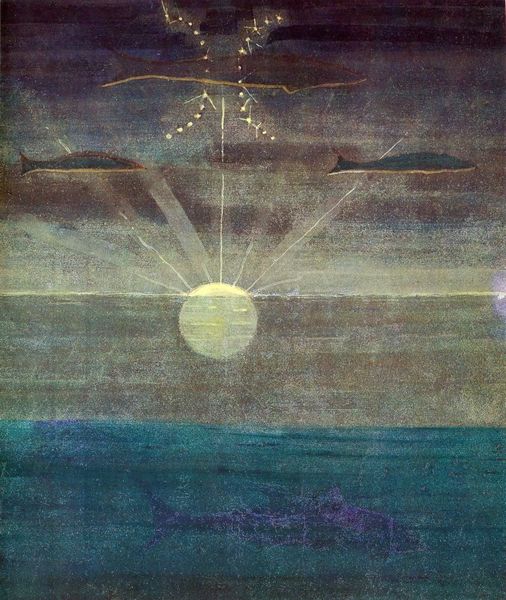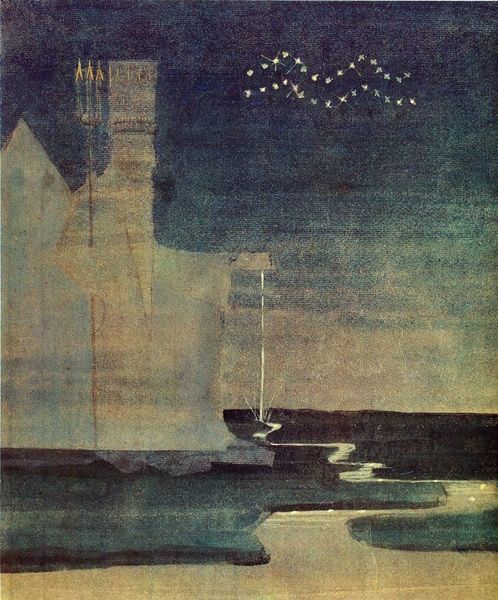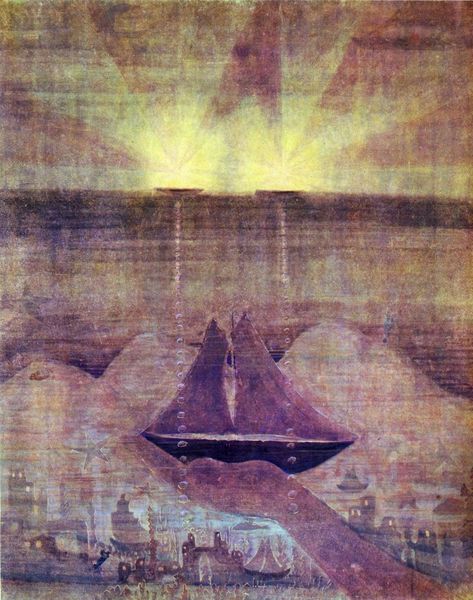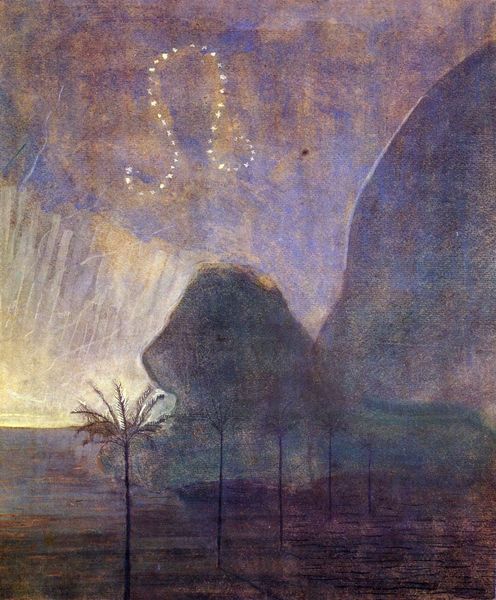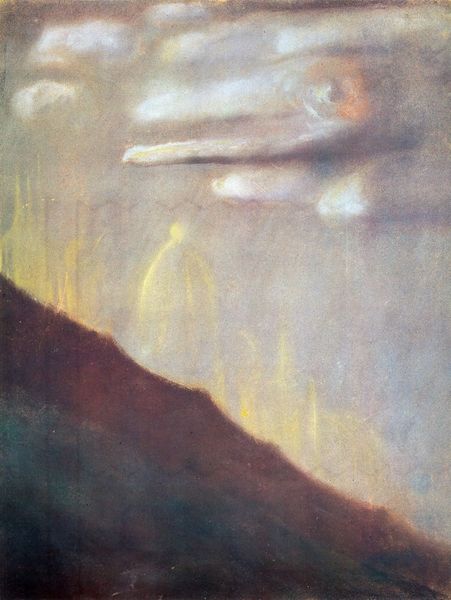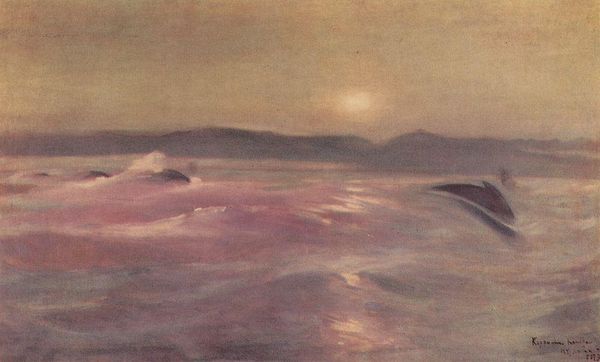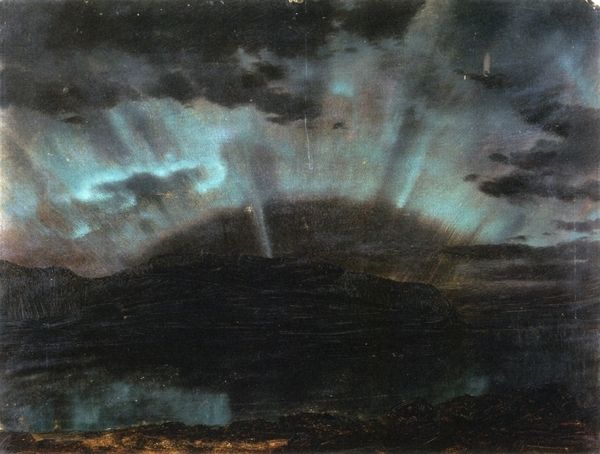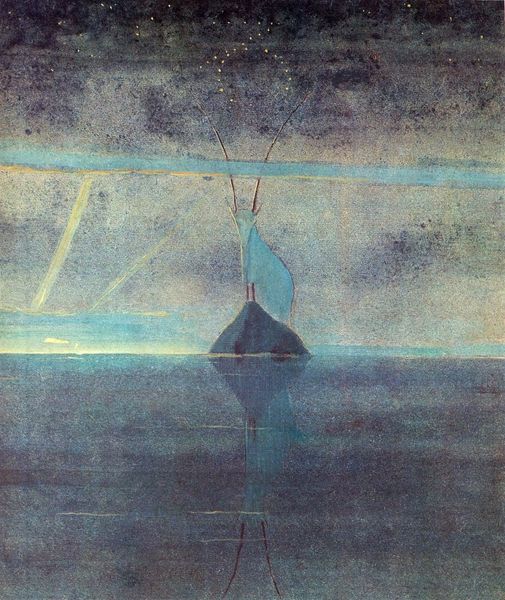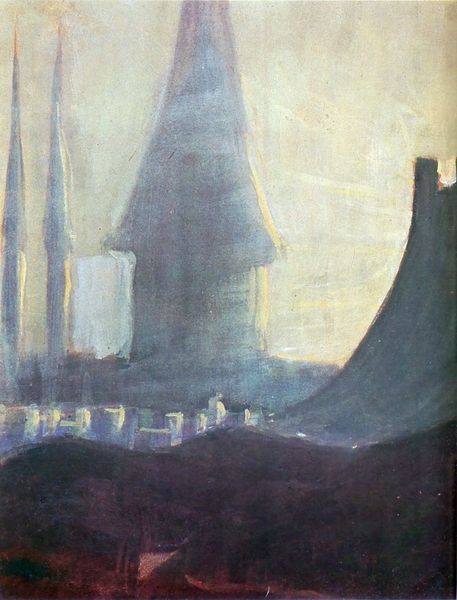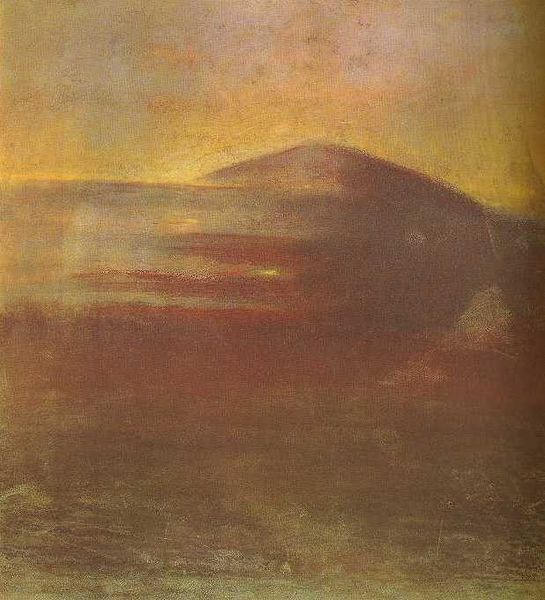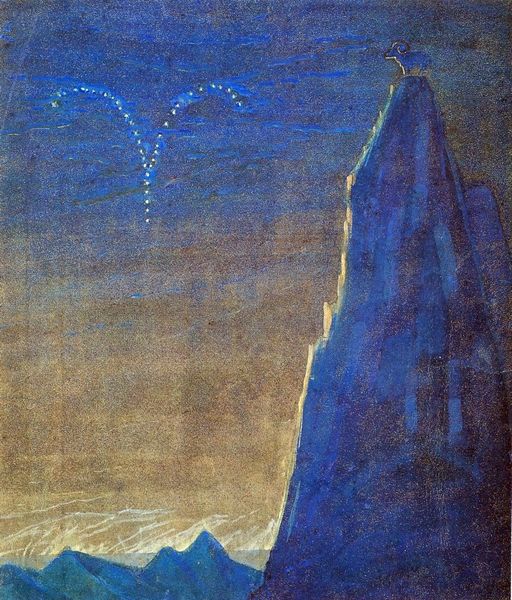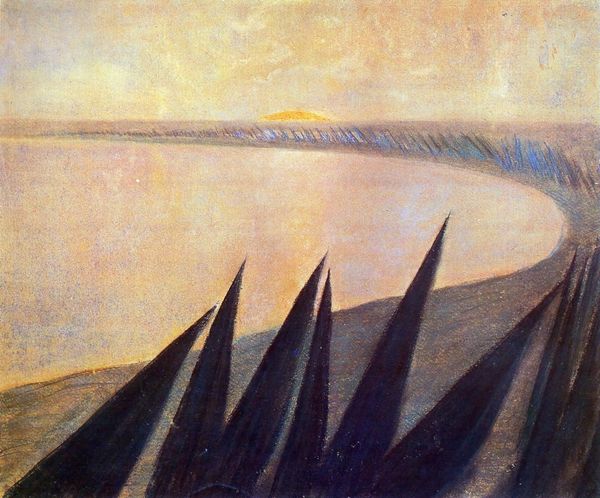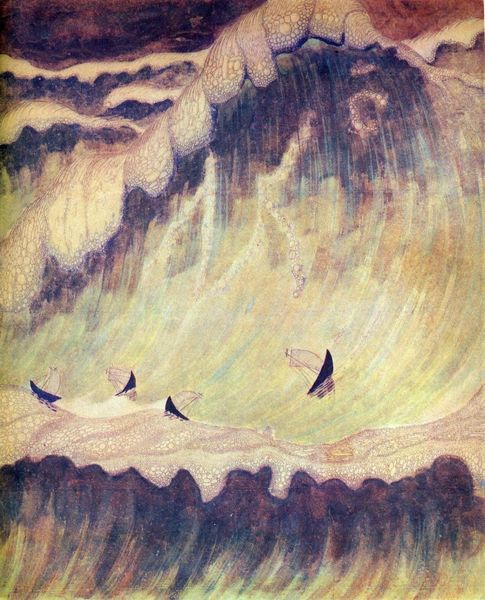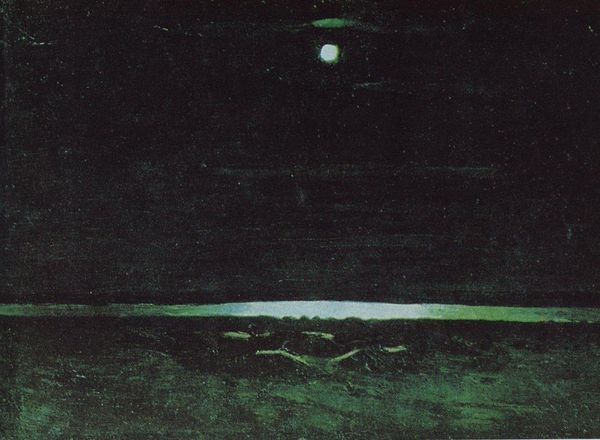
tempera, painting
#
allegories
#
sky
#
tempera
#
symbol
#
painting
#
asian-art
#
landscape
#
abstraction
#
symbolism
Dimensions: 35.6 x 30.1 cm
Copyright: Public domain
Editor: So, this is "Taurus," painted by Mikalojus Konstantinas Ciurlionis in 1907, using tempera. There's something so brooding about it. That dark silhouette of the bull against the stylized sky... It feels charged with some kind of potent, almost mystical energy. How do you interpret this work? Curator: This is an invitation to explore the intersections of art, astrology, and identity. Ciurlionis, situated in early 20th century Lithuania, was deeply invested in symbolist ideas, layering cultural narratives and abstract forms. The Taurus constellation and bull imagery, archetypal symbols of strength and virility, emerge within the tempera paint in a way that begs the question: Is he referencing Western astrological traditions or engaging with other cultural cosmologies? Editor: I see what you mean. The abstraction almost makes it seem universal, yet the title immediately grounds it in Western astrology. Curator: Precisely. How might we consider the artist's identity as a Lithuanian man working within a shifting landscape of cultural and political power at that time? How might that positionality inform his use of symbolism? Think of Lithuania as a place between empires, rediscovering its folk traditions while engaging with broader European culture. Editor: So, "Taurus" becomes less about just the astrological sign, and more about the complex negotiation of cultural identities. Curator: Exactly! The painting then isn't just a depiction, but an intersectional space. By deconstructing the layers of symbolism, from Western astrology to possible allusions to Eastern philosophies, it exposes the historical and social currents that shaped Ciurlionis’ vision. It pushes us to ask, what does it mean to claim and recreate such a symbol? Editor: That’s a much richer way to look at it. I was focused on the aesthetic impact, but the deeper cultural and political context completely changes the reading. Curator: That's the power of art: to continually challenge our perceptions and prompt further inquiry.
Comments
No comments
Be the first to comment and join the conversation on the ultimate creative platform.
